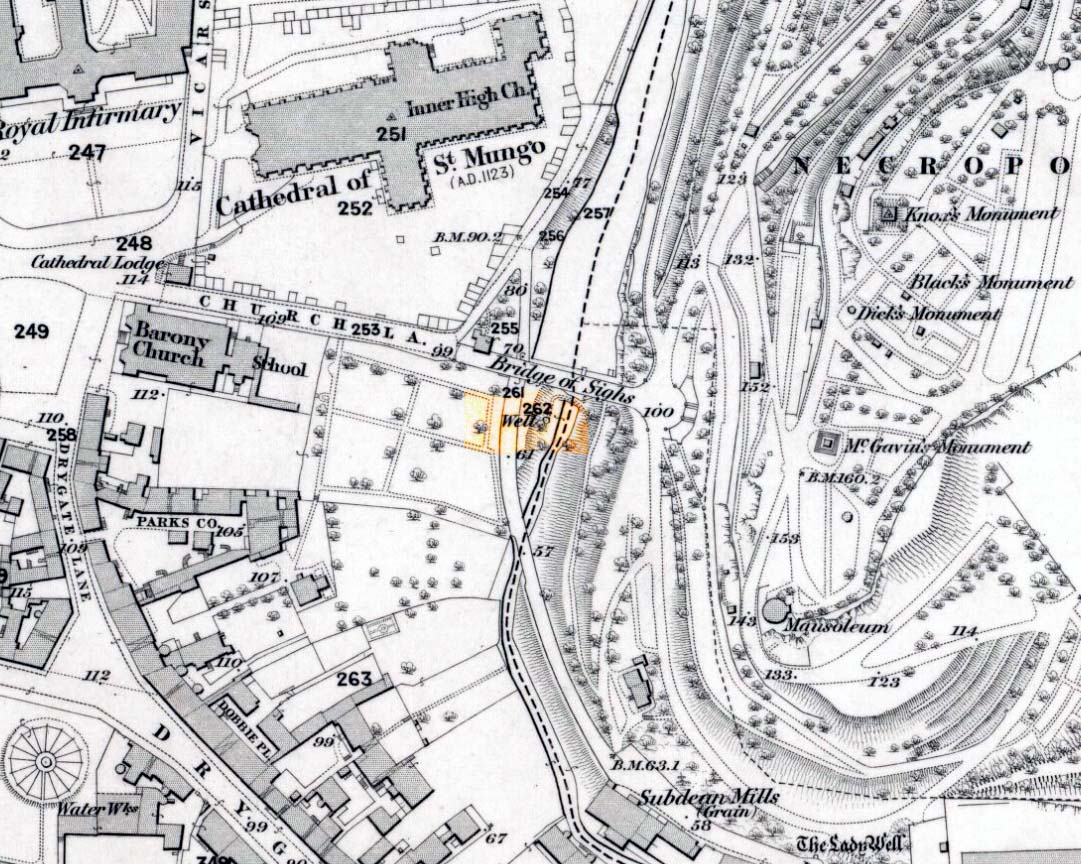Standing Stone (destroyed): OS Grid Reference – NO 5404 6892
Archaeology & History

Despite being shown on the early OS-maps of the area, I can find few references this place. The Ordnance Survey lads themselves, when visiting here in 1863, merely told that this it was “a standing stone of which nothing is known except the name. It is 3 feet high, three feet in diameter at base, and a foot and a half at top.” Even in Cruikshank’s (1899) definitive survey of this township he could add little more, merely telling:
“About a quarter-of-a-mile north of Bellhill is a field known as “the Priest’s Field.” There is a large right stone in the middle of it, called “the Priest’s Stone,” and it is so given on the Ornance Survey map. not simply because such is the local name, but also because the skilled surveyors after examining it concluded that it had been used for sacrifice. It stands just behind the site of the old farm steadying of Upper Argeith, or vulgarly, Townhead.”
Quite what he meant by saying that “it had been used for sacrifice,” god only knows! But the writer was the local minister and so would have been possessed by the usual delusions. Anyhow, the stone was uprooted and destroyed by the farmer at Newbigging, sometime prior to 1958. Idiot!
A half-mile north of this could once be seen a stunner of a site: a double-ringed giant tomb from where hundreds of cartloads of stone were taken. It too no longer exists!
References:
-
Cruikshank, F., Navar and Lethnot: The History of a Glen Parish in the North-east of Forfarshire, Black & Johnston: Brechin 1899.
-
Royal Commission on the Ancient and Historical Monuments of Scotland, The Archaeological Sites & Monuments of Central Angus, Angus District, Tayside Region, HMSO: Edinburgh 1983.
Acknowledgements: Huge thanks for use of the Ordnance Survey map in this site profile, reproduced with the kind permission of the National Library of Scotland.
© Paul Bennett, The Northern Antiquarian
The map could not be loaded. Please contact the site owner.
